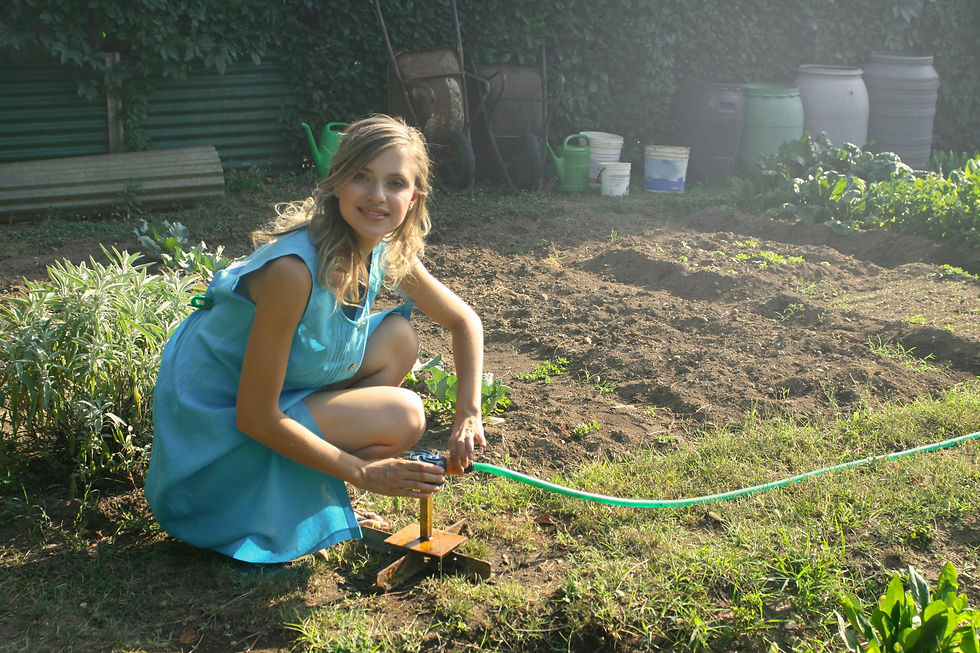Transforming Yard Health with Expert Invasive Plant Management
- Elevated Magazines

- Aug 18
- 3 min read
Pestering weeds threaten the aesthetic and ecological balance of yards across the country. As homeowners become increasingly aware of their yard’s health, the need for effective invasive plant management has never been clearer. Keeping gardens thriving is not just about selecting beautiful plants. It involves understanding the ecosystem and how invasive species disrupt it. Managing these invaders can prevent severe issues down the line, from reduced biodiversity to harmful soil conditions.

Understanding the Problem of Invasive Plants
Invasive plants are species that, when introduced to a new environment, adapt and proliferate at alarming rates. These species often outcompete native plants for resources such as sunlight, water, and nutrients. The consequences can be devastating for local ecosystems. Research indicates that invasive plants can reduce biodiversity by taking over habitats that native species require for survival.
Beyond ecological impact, invasives can affect human activities, such as gardening and landscaping, by rendering spaces unmanageable. Weeds are not just a nuisance; they can exponentially increase maintenance effort and costs. Homeowners must recognize these plants as more than just weeds. They are threats to yard health. Taking preemptive and corrective measures is important in managing these invasive species to maintain robust plant life and soil quality.
The Economic Impact of Invasive Species
Addressing invasive plant species isn't just a matter of personal preference. It's an economic concern. By investing in proper weed control in Arizona or elsewhere, homeowners can save money in the long run through improved garden health and reduced maintenance needs. An informed approach can help avoid larger expenditures related to invasive species removal later on.
Homeowners should consider the long-term ramifications of not managing invasive plants. The initial costs of eradicating invasive species often pale in comparison to the ongoing expenses of attempting to deal with their damaging effects.
Components of Effective Invasive Plant Management
Effective invasive plant management involves multiple strategies, all aiming at getting rid of unwanted species while fostering the health of beneficial plants. The first step is identification; recognizing which plant species are invasive in a specific region is crucial. Many resources, including local environmental organizations, provide lists of harmful species that homeowners should be aware of. Once identified, removal methods can vary, from manual extraction to herbicide application, each with specific pros and cons.
Preventative measures play a pivotal role, allowing homeowners to reduce the chances of new invasions. Regular scouting and monitoring can help identify emerging problems before they escalate. Educating oneself about the lifecycle of dominant invasive plants can guide better management practices. Involving professionals when necessary optimizes both time and resources, ensuring long-term success in invasive plant management.
Maintaining a Healthy Ecosystem through Native Plants
Incorporating native plants into landscaping can be remarkably beneficial. Native species are typically adapted to the local climate and require less maintenance and resources compared to non-natives. They provide important habitats for local wildlife, fostering biodiversity. Nurturing native plants can help establish a balanced and resilient ecosystem within your yard.
By choosing native landscaping, homeowners contribute to overcoming the spread of invasive species naturally. Several organizations offer guidance on which native species suit different regions and conditions. Implementing these plants supports the environment and creates a visually appealing landscape.
Long-term Monitoring and Maintenance Strategies
Once invasive plants are managed effectively, continuous monitoring is vital for sustaining yard health. Regular inspections can help catch potential invaders before they can establish themselves. A system of integrated yard management can be beneficial, combining practices such as mulching, mowing, and watering to prevent invasive overwintering. Engaging with local gardening groups or services for knowledge exchange can increase awareness of new invasive threats as they emerge.
Many homeowners overlook the importance of proactive approaches; those who remain vigilant can better protect their landscaping investments. Besides vigilance, maintaining healthy soil will minimize invasive plants' chances of regrowth. Understanding the plant spectrum, along with seasonal weather patterns, equips homeowners with valuable tools for long-term maintenance.
Community Involvement in Botanical Biodiversity
A collaborative approach can significantly enhance invasive plant management efforts. Communities that engage in shared educational activities can bolster individual homeowner efforts. Organizing neighborhood clean-up events and plant swaps can cultivate interest in yards' ecological health. Encouraging a sense of responsibility fosters a culture of taking care of the environment.
Schools and universities can offer outreach programs focusing on local ecosystems and invasive management practices. The more informed a community is, the more effective its collective actions can be. Bringing local agencies into the fold can provide resources that amplify individual efforts. Together, communities can create a network of support where ideas and best practices flow freely, resulting in healthier surroundings.

By being proactive and educated, you can create a thriving ecosystem that enriches both your yard and the local environment. Incorporating native plants, employing expert management, and engaging with the community significantly transform yard health. Maintenance and awareness are key; through diligent efforts, homeowners can enjoy lush, vibrant, and healthy landscapes for years to come.
